Toto, Japan's maker of hi-tech toilet seats (known as washlets) is trying to enter the American market. To me, it's a mystery why this hasn't happened before.
Whoever tries this comfy toilet seat will never forget the experience. Interesting to see how they're trying to sell a 'higher order' of cleanliness, if you will, and ultimately 'happiness'.
Check out their cheeky web page below. And here, a shot of the control buttons. These icons always make me smile.
And here, a shot of the control buttons. These icons always make me smile.
(link via cityofsound)
Monday, July 02, 2007
toto is happiness
Posted by
Nelson
at
11:46 PM
2
comments
![]()
Labels: brands, japan, marketing, technology
Monday, June 04, 2007
give me whatever...
"Whatever"... the typical "couldn't care less" expression of today's youth, has become a beverage brand in Singapore. Coupled with "Anything" they form an interesting concept: a surprise in every can. You order Whatever or Anything and you'll never know for sure what exactly you'll drink. Whatever comes in 6 different non-carbonated juices flavors, and Anything comes in 6 different carbonated flavors. Only after you open the can you'll find out which flavor you got. Below, one of the TV ads (watch it on YouTube here)
Below, one of the TV ads (watch it on YouTube here)
Posted by
Nelson
at
10:02 AM
0
comments
![]()
Labels: advertising, brands, singapore
Thursday, May 17, 2007
product placement in monocle manga
I'm truly enjoying reading the Kita Koga manga that comes with Monocle magazine (story and art by Takanori Yasaka). Kita Koga is the story of Niels Watanabe, code name Koga, a cosmopolitan, kick-ass, modern agent, who works for a secret intelligence division in Japan's Defence Ministry. Niels is part Japanese, part Scandinavian, and jets around the globe in his missions.  One of the interesting things about it is the product placement. Though they obviously promote the sponsors, the brands here help bring the story closer to reality, so to speak, it's something we recognize. Take a look at the collage below: Niels drives an Audi, drinks Carlsberg, and uses a Prada mobile phone (though perhaps a Sony-Ericsson would've been a better fit).
One of the interesting things about it is the product placement. Though they obviously promote the sponsors, the brands here help bring the story closer to reality, so to speak, it's something we recognize. Take a look at the collage below: Niels drives an Audi, drinks Carlsberg, and uses a Prada mobile phone (though perhaps a Sony-Ericsson would've been a better fit). Can't wait for the May edition to come out.
Can't wait for the May edition to come out.
Posted by
Nelson
at
11:33 AM
0
comments
![]()
Thursday, May 03, 2007
say it again? a dell store?
Dell's Founder and CEO Michael Dell has recently said that "the direct (sales) model has been a revolution, but it's not a religion".
Dell already opened a showroom in Dallas (only to display the models, not to sell them just yet).
All signs seem to indicate that we'll soon see a "Dell Store" out in the street.
This will be an interesting story to watch.
Reference:
Darlin, Damon (2007). Dell's Founder Is Rethinking Direct Sales. The New York Times. April 28, 2007 (here)
Posted by
Nelson
at
8:16 PM
1 comments
![]()
Labels: "meaning management", branding, brands, marketing, retail, technology
Thursday, April 26, 2007
japanese pizza anyone?
Fusion cuisine, which gave us Rice Burgers and California Sushi Rolls, has a new representative in Singapore. It's a place called "Oishi Japanese Pizza" (oishi means "tasty, delicious").  Well, it's not exactly new, they've existed for some time, but I only came across one of the outlets this weekend.
Well, it's not exactly new, they've existed for some time, but I only came across one of the outlets this weekend.
They have a novel proposition, Japanese Pizza. There's the 'Teriyaki Chicken Pizza" as well as the "Wasabi Seafood Pizza" and some other combinations. I've never been to the place, so I can't really comment about their pizza. They have several outlets across the island, so I assume business is doing well and the pizza tastes really good. But I'd like to abstract for a moment from the food to comment about the concept...
Planners usually love an oxymoron because they have the potential to create an unexpected and differentiated proposition for a brand. You pick a set of meanings that people are not used to see hand-in-hand and voilà, there's a novelty (well, actually, it's a bit more complex than that, but for all purposes, think Levi's jeans and their contradictory "traditional yet young" concept).
The creation of a new concept is not perfect science however, and apparently there's a degree of contradiction that people are willing to accept. Sometimes, the proposition so defies our logic that there's a danger people will simply reject it.
My first reaction to the term "Japanese Pizza" was of incredulity (they can't be serious). Maybe this is because of my cultural background. Having lived most of my life in São Paulo, which boasts the largest Italian community outside Italy, I'm used to the traditional notion of pizza. One thing is to mix "French" and "Vietnamese" cuisines, the classic "fusion cuisine", quite another is to put together the terms "Japanese" and "pizza" in the same phrase. It's a bit of a stretch, at least for me.
Over time however, there's nothing that proves that these new concepts won't be able to overcome the initial strangeness with which they are received. Maybe this is one those cases where if you keep repeating the concept, eventually it becomes a reality. We might even come to take it for granted some day. And as I said, the pizza might be good. So, like the now ubiquitous California Sushi Roll, the Japanese Pizza might win over the world. Let's wait and see.
Next up: "Squisito Italian Sushi".
Let's brace ourselves.
Posted by
Nelson
at
1:43 AM
2
comments
![]()
Labels: "country of origin", branding, brands, food, meaning, oxymoron
Monday, April 02, 2007
diderot and the cute nissan pino
Grant McCracken, in his book “Culture and Consumption”, recalls an essay by French philosopher Francis Diderot. In his essay, “On Partying with my Old Dressing Gown”, Diderot described the transformation caused in his life by a beautiful new dressing gown he received as a gift. He loved the gift, but soon thereafter however, he notices that, compared to the new gown, the decoration in his room, the rug, the curtains, the desk, all looked shabby. He proceeds to replace them one by one, so that they match the new gown. McCracken describes this process as the “Diderot effect”, the way people create a lifestyle by trying to find cultural consistency in the things they buy, so that they “match”.
I just mention this idea because I came across the new Nissan Pino, recently launched (last January) in Japan, targeted at young women. Looking it as it is, it seems like just another small car. However, a visit to Pino’s website quickly tells a different story. To start with, you're welcomed by this "lovely loading" sign.
However, a visit to Pino’s website quickly tells a different story. To start with, you're welcomed by this "lovely loading" sign. Then you get it. Pino is a kawaii (cute) car. But the interesting thing about the Pino is not the car in itself, but how the cuteness meaning is created. Look at the picture below.
Then you get it. Pino is a kawaii (cute) car. But the interesting thing about the Pino is not the car in itself, but how the cuteness meaning is created. Look at the picture below. The car is not the center of the action. It’s more of a complement to the whole scene. And it’s the surrounding, with all its cuteness, that "contaminates" the car with meaning. Normally, as Wired’s Mark Durhan well noted, “...using cutesey fluffy pinkness to sell cars to 20-year-old women would be beyond the pale - too narrow, too sexist, too ludicrous. Not so in Japan”.
The car is not the center of the action. It’s more of a complement to the whole scene. And it’s the surrounding, with all its cuteness, that "contaminates" the car with meaning. Normally, as Wired’s Mark Durhan well noted, “...using cutesey fluffy pinkness to sell cars to 20-year-old women would be beyond the pale - too narrow, too sexist, too ludicrous. Not so in Japan”.
The Pino, much as Diderot’s gown, helps the girls define a lifestyle. Like Diderot’s gown, it’s not the only item, but a complementary object that, along with her keitai (mobile), her favorite pair of jeans, her pair of sneakers, her handbag, her nail polisher, and all her other possessions (all “lovely” of course, see below), creates her lifestyle and will accompany her “365 days a year, 24 hours a day”. And then comes the fun part, accessories. Girls can choose a heart-shaped cushion, a stuffed dog called “Pino Dog”, a flower-patterned upholstery, and a dozen other matching items, to help them create the desired effect.
And then comes the fun part, accessories. Girls can choose a heart-shaped cushion, a stuffed dog called “Pino Dog”, a flower-patterned upholstery, and a dozen other matching items, to help them create the desired effect. Accessorizing and personalization are not new ideas, but I hardly remember seeing them so tightly-knit behind the creation of specific lifestyles.
Accessorizing and personalization are not new ideas, but I hardly remember seeing them so tightly-knit behind the creation of specific lifestyles.
And if you thought the concept of “cuteness” defined only one lifestyle, you haven’t really started in this world. Pino’s campaign shows a group of three fashionable friends who strut around their different "cute styles".  They portray three different types of cuteness: the “feminine cute” Yumi-chan, who is a model and loves dancing and snowboarding;...
They portray three different types of cuteness: the “feminine cute” Yumi-chan, who is a model and loves dancing and snowboarding;... ...the “casual cute” Kimi-chan who wears a pair of jeans shorts and practices yoga;...
...the “casual cute” Kimi-chan who wears a pair of jeans shorts and practices yoga;... ...and the “beautiful cute” Tamami-chan, who wears a plaid skirt and is into classic ballet.
...and the “beautiful cute” Tamami-chan, who wears a plaid skirt and is into classic ballet.  Each one of them brings her own matching accessories; a stuffed pink dog and flower-themed upholstery for Yumi-chan; an apple-shaped CD holder and a green dog for Kimi-chan, and so on. One does not have to worry about which is the best match. Pino does it for her (but of course, people are free to try their own creativity).
Each one of them brings her own matching accessories; a stuffed pink dog and flower-themed upholstery for Yumi-chan; an apple-shaped CD holder and a green dog for Kimi-chan, and so on. One does not have to worry about which is the best match. Pino does it for her (but of course, people are free to try their own creativity).
I don't know if this "cute strategy" would translate well outside Japan, maybe this is too much of a Japanese thing, but the concept behind it is great. Diderot would've certainly endorsed it.
Posted by
Nelson
at
11:48 PM
4
comments
![]()
Labels: "meaning management", brands, culture, japan, marketing
Thursday, March 15, 2007
apple: america's best retailer
There's a very interesting story about Apple in the latest edition of Fortune magazine. This time about how Apple has transformed itself into America's best retailer, beating the 'sales per square foot a year' of established retailers such as Saks, Best Buy and even Tiffany's (read article here, sub. req.).
According to the article, a research report by Sanford C. Bernstein, shows that the averages of Apple's 174 stores is US$ 4,032 psf/year, against Saks' $362, Best Buy's $ 930, and Tiffany's $ 2,666.
Not so surprising considering the stores' relative small size (compared to other, much bigger department stores) and the number of people who frequent them. See the line outside the Regent St Apple Store, in London, below (2005 Christmas season).
Tuesday, March 13, 2007
nintendo gets it!
 Corporate culture is one of the most important aspects of an organization. For mega corporations with thousands of employees all over the world, that's what holds a company together, their set of values.
Corporate culture is one of the most important aspects of an organization. For mega corporations with thousands of employees all over the world, that's what holds a company together, their set of values.
There's no amount of micromanaging that can teach how a customer service rep should do his/her job, but tell them what the company values are and somehow they'll figure out what to do.
Take a look at this post from saska, about her surprising experience with Nintendo's customer service.
Now read this article in the "Washington Post" about Nintendo's video game guru Shigeru Miyamoto (photo on the left) keynote speech at last week's "Game Developers Conference", in San Francisco.
Miyamoto, creator of "Mario Brothers" and "Donkey Kong", told the audience, "developers should resist the temptation to create only sequels of established hits and games based only on horror and revenge". Speaking about his own approach he said, "I always want that first reaction to be emotion, to be positive, to give a sense of satisfaction, glee... Certain obstacles may temporarily raise feelings of suspense, competition, even frustration. But we always want that final result, that final emotion, to be a positive one."
If you read both articles, it's clear there's a common thread there, and that's why Nintendo seems poised to take over the gaming world.
Reference:
Konrad, Rachel (2007). Nintendo Guru Wants More Happy Games. The Washington Post. March 8, 2007 (here).
Posted by
Nelson
at
4:08 PM
2
comments
![]()
Labels: brands, corporation, culture, games, marketing
Thursday, March 08, 2007
nike's new basketball uniforms
Nike has unveiled its new college basketball uniforms, to be worn by four college teams, Arizona, Florida, Ohio State, and Syracuse, and which they have named "System of Dress". It is comprised by a tight top (similar to those used by track athletes), and a loose bottom (very, very loose, where do you think they got the 'dress' name from).
The other novelty is that players will be able to customize their uniform to a certain extent, using long or short sleeves tops and Dwayne Wade-style leg wraps.
Nike designer Hans George says that the change was the result of "athlete feedback and cultural insight... the desire among players to personalize their look while still looking part of the team".
It's already producing what some reporters are calling "a dramatic" new look in sports. Take a look below.

Friday, March 02, 2007
did nintendo copy xavix?
Have you heard of a game console called Xavix? I saw it at the store yesterday and, surprised, I thought to myself "hmm, already a Wii copycat"! Then later I checked on google and to my even bigger surprise I learned that Xavix was actually launched on September 2005, a full year before Nintendo's Wii!
Xavix, made by a Japanese company name SSD, basically has the same principle as the Wii, it's an interactive motion controlled gaming console. There are a few differences though:
- The remotes resemble actual sports equipments (boxing gloves, tennis rackets, golf clubs, etc.) thus rendering a more realistic experience (not sure whether this is necessarily better in terms of pure game enjoyment)
- The view on the screen doesn't show your 'avatar'. The ball comes straight at your face in a tennis game, for example.
- Nintendo's marketing is much more focused and clear. Xavix seems uncertain of what it wants to be: a video-game or a fitness device. From their website: "Xavix is a revolutionary way to interact with your TV. From your favorite sports to high-energy workouts..."
Take a look for yourself at xavixstore.
Also check out this commercial on YouTube.
Posted by
Nelson
at
10:25 AM
2
comments
![]()
Thursday, February 22, 2007
innocent breaks into uk's top 100 brands
 A survey by Check Out magazine (reg. req.) in the UK, shows that while traditional brands such as Coca-Cola and Walkers still dominate the top of the grocery list, healthy brands are enjoying the strongest sales growth.
A survey by Check Out magazine (reg. req.) in the UK, shows that while traditional brands such as Coca-Cola and Walkers still dominate the top of the grocery list, healthy brands are enjoying the strongest sales growth.
Remarkably, Innocent Drinks, the smoothie brand (love the 'strawberry & banana' one), is the fastest-growing UK brand, and for the first time breaks into the top 100, at No. 63, with sales of £96m.
Reference:
Smithers, Rebecca (2007). Organic Food Breaks Into Top 100 brands. The Guardian. February 21st, 2007. (here, free, but reg. req.)
Top 100 Grocery Brands Report (download it here, free but reg. req.)
Thursday, February 15, 2007
Wednesday, November 29, 2006
brands and pop culture
Two examples of brands that are trying to engage pop culture:
The first one actually is a co-branded effort between Nerf's Showtime Hoops and AND1. Showtime Hoops is a basketball kit that promises to bring the excitement of streetball right into your living room. It has an attached sound system that says when you hit a good shot and when you didn't, all emceed by AND1's Duke Tango. AND1 has been a phenomenon. Riding the wave of NBA's success but trailing an entire different path, the brand has built its reputation as the street, hip-hop version of the (then) clean-cut NBA. They stand for a lifestyle now, selling shoes, DVDs, video-games, magazines, etc. See the TV commercial here. The other example is Burger King's launching of three X-Box games featuring "the creepy king from the US commercials" (via uncrate.com). You can buy one at US$ 3.99 with the purchase of a Value Meal.
The other example is Burger King's launching of three X-Box games featuring "the creepy king from the US commercials" (via uncrate.com). You can buy one at US$ 3.99 with the purchase of a Value Meal.
Posted by
Nelson
at
5:44 PM
0
comments
![]()
Labels: "pop culture", brands
Tuesday, November 28, 2006
i hate (brand name)
 When you become a celebrity, some people will like you, but some will not.
When you become a celebrity, some people will like you, but some will not.
There's an interesting article in the New York Times Magazine about this celebrity fate, showing the case of the "Rachel Ray Sucks Community".
Rachel Ray is not well known in Asia, but she's big in the US. She's a television food celebrity. She has her own TV show, her own magazine, has written many cooking books, and recently started her own talk-show. But what sets her apart is her ebullient character. According to Grant McCracken, "stylistically, Rachael Ray is the anti-Martha...Where Martha Stewart was cool, authoritative, self possessed, as if from the manor born, Rachael Ray is warm, improvisational, unassuming, and just folks. If Martha Stewart was ceremonial perfection to home making, Rachael Ray captures the "close enough is good enough" spirit that animates most American households."
Grant obviously thinks highly about Ray's approach, arguing that she's rescuing the rituals and meanings involved in food preparation and consumption, something that has been largely forgotten recently by TV food shows, with much of their focus being only on the food preparation (and not on what happens after the food is cooked). I've never watched her show but I tend to listen to what Grant says.
So, I was a little surprised that the number of Ray haters (how do you call them?) was so large. According to the NYT's article, the group has more than 1,000 members, whose common trait is to be "anti-Rachel". They criticize "...her cooking skills, her overreliance on chicken stock, her kitchen hygiene, her smile (often compared to the Joker’s), her voice, her physical mannerisms, her clothes, her penchant for saying “Yum-o” and so on. The general tone is suggested by the community’s name for the object of its united spite: “Raytard.” Ouch!
It came to mind that in this age of consumer activism, people are more than willing to share their dislike for a particular brand, forming these anti-fan groups. And brands (and if you become a celebrity, you become a brand, for good and for bad) inevitably will have to learn how to manage this sort of manifestation. Or, as Über-Planner Russell Davies says, brands will have to keep the conversation open.
Because even if you're very successful (or exactly because of it) there'll always be some people who will not like you. Take a look at this list compiled by Organic Frog. Apple, Nike, Starbucks, Ikea, Samsung, Tesco, PS3, Microsoft, all these brands (and many others) have very dissatisfied (not to say downright angry) consumers who'll go to great lengths to voice their opinions.
Reference:
Walker, Rob. Anti-Fan Club. The New York Times Magazine. November 26, 2006. (here)
Posted by
Nelson
at
6:19 PM
0
comments
![]()
Labels: "meaning management", activism, brands, celebrity
Friday, November 17, 2006
tiger brands
This might be something most people take for granted here in Asia but which strikes my foreign eyes. I see Tiger brands and Tiger-named companies everywhere. I've been collecting a few examples recently. See below:
Singapore's Tiger Beer. Japan's Onitsuka Tiger
Japan's Onitsuka Tiger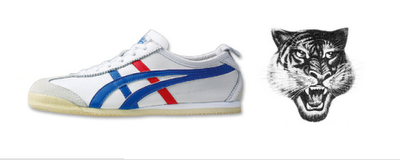
Singapore's Tiger Balm Asian Tigers K.C. Dat, a moving company
Asian Tigers K.C. Dat, a moving company
Tiger Air, a budget carrier
Japan's Tiger Appliances, a rice cooker maker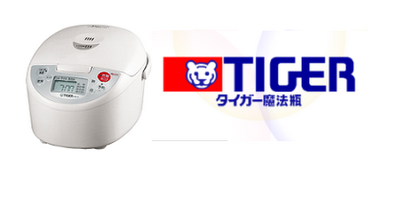 China's Tiger Generator
China's Tiger Generator China's Guangzhou Tiger Head Battery
China's Guangzhou Tiger Head Battery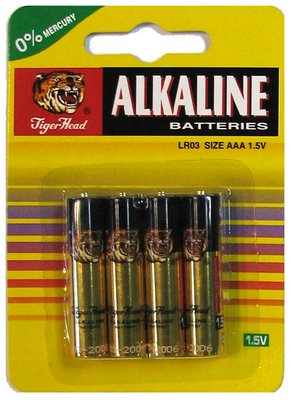 China's Hang Zhou Tiger, maker of Tiger One Lamps
China's Hang Zhou Tiger, maker of Tiger One Lamps
Korea's LG Tiger One External Laptop Batteries Japan's Hanshin Tigers
Japan's Hanshin Tigers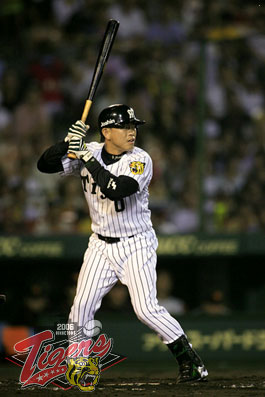 And so goes the list. I'm sure I'm missing some brands here.
And so goes the list. I'm sure I'm missing some brands here.
There's a simple reason for this profusion of Tiger brands throughout Asia. There are no lions here. Tigers therefore are the kings of animals. They've been part of Asian mythology for ages. There are countless tiger stories in most Asian countries, China, Korea, Vietnam, India, Japan.
The most important of all, of course, is the Chinese zodiac, the Tiger being one of the 12 animals that comprise the zodiac. A Tiger person is seen as a born leader. Famous Tigers include Queen Elizabeth II, Karl Marx, and Richard Branson. Apart from the zodiac there are several other tiger tales. In China's countryside, it's still common today for babies to wear these tiger shoes, with the belief that they'll help protect the babies from evil spirits.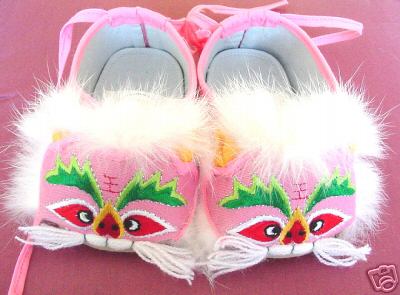 In Korea, there's a number of tiger inspired tales. And these tiger paintings are pretty common to spot hanging on the walls in Chinese and in Japanese residences.
In Korea, there's a number of tiger inspired tales. And these tiger paintings are pretty common to spot hanging on the walls in Chinese and in Japanese residences.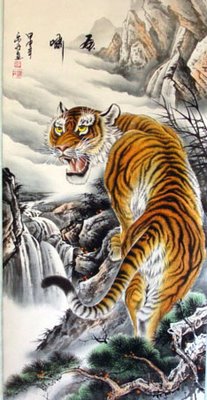 Taking into consideration this background, it's clear to see that these Tiger brands are trying to tap into this rich cultural pot. Whether they are doing this intentionally or not is another question. But what strikes me most is that despite sharing the same name, they apparently are able to create different meanings for themselves. Tiger Beer, for example, is positioned as a cosmopolitan and cool beer brand, whereas nothing could be more traditional and local than Tiger Balm, a pain relieving ointment with an intense (some would say awful) menthol smell.
Taking into consideration this background, it's clear to see that these Tiger brands are trying to tap into this rich cultural pot. Whether they are doing this intentionally or not is another question. But what strikes me most is that despite sharing the same name, they apparently are able to create different meanings for themselves. Tiger Beer, for example, is positioned as a cosmopolitan and cool beer brand, whereas nothing could be more traditional and local than Tiger Balm, a pain relieving ointment with an intense (some would say awful) menthol smell.
This profusion of brands sharing the same name, as far as I remember, is not very common in the West.
But I found out that Tiger brands are not exclusively an Asia thing. While they don't exist in the same number as in Asia, there are quite a few examples. Let's take a look at some other Tiger brands around the world:
Detroit Tigers baseball team in the US.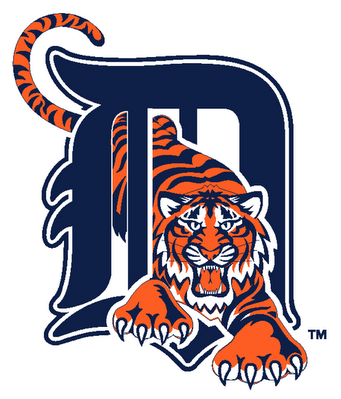 Apple's Tiger Operating System.
Apple's Tiger Operating System. There's also a big food company called Tiger Brands in South Africa, and a pipe company called Tigre (Tiger in Portuguese) in Brazil.
There's also a big food company called Tiger Brands in South Africa, and a pipe company called Tigre (Tiger in Portuguese) in Brazil.
And of course, there's Tony the Tiger. While not properly a brand, it's such a strong icon that it almost eclipses the Kellogg's brand.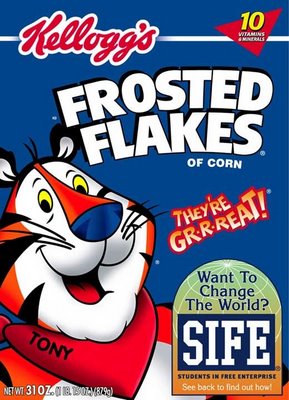 And finally there's Tiger (as in "Woods"), who, being half-Asian, could very well have entered the Asian tally as well.
And finally there's Tiger (as in "Woods"), who, being half-Asian, could very well have entered the Asian tally as well. Tiger Woods is well on his way to become the first sportsman to reach US$ 1 billion in earnings, which I believe easily put him among the top 3 most valuable brands in the above list. This Woods phenomenon will inevitably spur the creation of a new wave of Tiger brands, and probably will add another layer of meanings to the noun "tiger" as well. Speaking of that there's already speculation that "Tiger" is going to be one of the most popular baby names in the next decades. Can you imagine it? A new generation full of baby Tigers? Now, that would be something interesting to witness. Let's wait and see.
Tiger Woods is well on his way to become the first sportsman to reach US$ 1 billion in earnings, which I believe easily put him among the top 3 most valuable brands in the above list. This Woods phenomenon will inevitably spur the creation of a new wave of Tiger brands, and probably will add another layer of meanings to the noun "tiger" as well. Speaking of that there's already speculation that "Tiger" is going to be one of the most popular baby names in the next decades. Can you imagine it? A new generation full of baby Tigers? Now, that would be something interesting to witness. Let's wait and see.
Posted by
Nelson
at
2:26 PM
3
comments
![]()
Tuesday, November 14, 2006
belgium not famous for wine
Another country of origin post (first Norway, then Hawaii, now Belgium). I noticed this ad on I-S Magazine the other day. This is a great example of using the negative form to call attention and to position the brand. Indeed, off the top of your head, why is Belgium famous for besides their beer? It must be a nice place to visit.
Posted by
Nelson
at
2:31 PM
2
comments
![]()
Wednesday, September 06, 2006
Agassi in Adidas

So Andre Agassi has retired. Many people have written about his career, his achievements, but one aspect in particular has called my attention. It’s the story of his transformation, from the young punk, a "rock and roll” tennis player to the bald statesman of the sport. Gary Smith, of Sports Illustrated, wrote a wonderful piece about it.
I love these stories of redemption, of people growing up, facing difficulties, but coming out better persons, with a broader perspective and reach.
Some examples come to mind. Tom Hanks, from teen comedy actor in “Big” to award-winning actor in “Philadelphia”, George Foreman from the fierce-looking boxer who lost to Muhammad Ali to the big-hearted, grill-selling grandaddy, "The Beatles" of “She Loves You” to "The Beatles" of “In My Life”.
For marketers and branding practitioners, Agassi’s transformation is even more interesting given the fact that he changed from Nike to Adidas late in his career, the change in sponsor seeming to highlight the person’s transformation. It’s as if the Nike brand (and the whole set of meanings conveyed by it) couldn’t fit with this new Agassi anymore.
For me though, it still feels weird to see him wearing Adidas. Just a thought.
Posted by
Nelson
at
2:03 PM
0
comments
![]()
Labels: "meaning management", brands, sports

